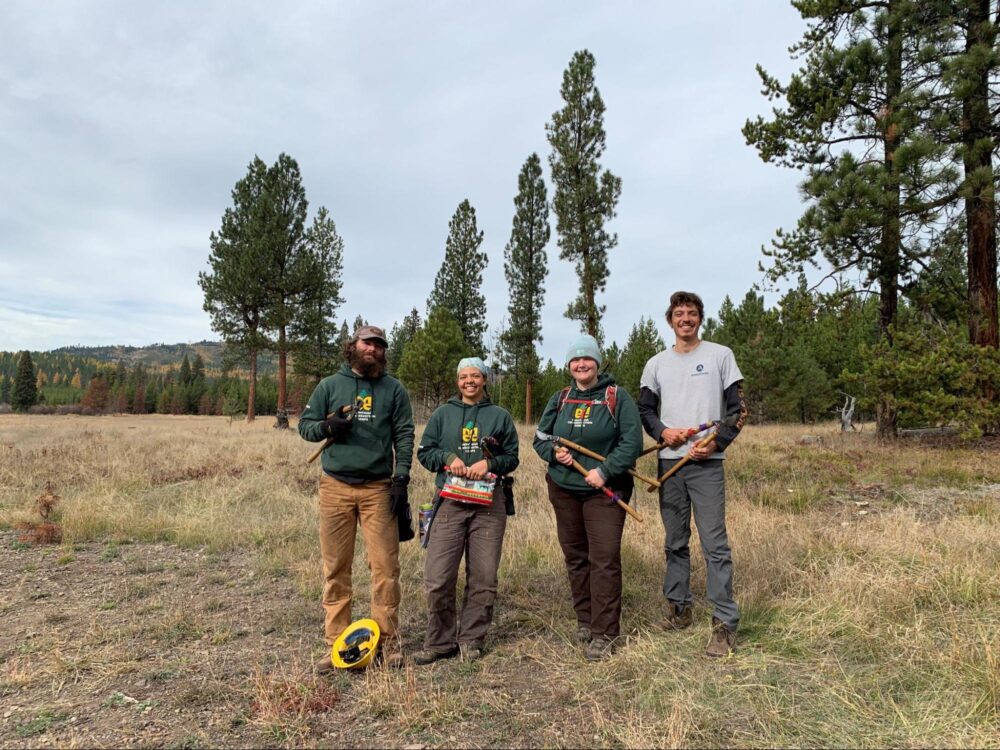We have much more to do and your continued support is needed now more than ever.
Berea College Struggles to Define the Role of Campus Carbon Sinks in Emissions Reporting
Here’s a rhetorical question: conservation or clean energy? While both are good and necessary, they are not always valued equally when it comes to climate change, and with limited organizational and governmental budgets, they are not always simultaneously possible. Is it better to build as many wind turbines as possible, at the risk of bat habitat and migration flyways, in order to cut carbon and try to ensure the survival of the earth’s ecosystems? Or does the need to protect wetlands (not forgetting about their carbon sequestration ability) come at the cost of opportunities for hydropower? Those of a green persuasion, aware of the finite amounts of open habitat and human attention, are often torn when sets of values collide.
More and more, college leaders are asking themselves this same question. One of the first requirements for signatories of the President’s Climate Commitment is to conduct a complete inventory of campus greenhouse gas emissions, which includes sources of renewable energy or other “carbon-positive” programs. As schools work towards meeting these requirements, many are finding that their particular school, because of unusual geography or a unique legacy, has assets that are currently left out of the equation, and play an unclear role in the curbing of anthropogenic emissions.
Berea College, a small Kentucky school that holds the honor of being the first interracial and co-ed school in the South, is one such. While its environmental work has won accolades (the school took honors in our own Chill Out competition in 2008) for its forestry work and educational farm, it is finding that the 8,400 acre, sustainably-managed forest owned by the school-perhaps its most significant environmental asset-is barely included in GHG emissions calculators.
Clean Air – Cool Planet‘s Campus Carbon Calculator, which is used by many schools, is designed around international GHG Protocols, and includes an “offset” section which encompasses purchased offsets, Renewable Energy Certificates, and forest preservation, calculated by metric tons of CO2 (or the equivalent) sequestered per year. However, aside from a referral to the IPCC formula, there is little guidance within the calculator on how to get that figure.
Jennifer Andrews, the Campus Program Manager at Clean Air-Cool Planet, says, “What’s currently in the calculator is essentially a placeholder that allows people to ‘get credit’ if they are willing to determine how many tons are being sequestered on their own. We don’t have a mechanism for doing analysis of biological sequestration as part of the tool; while this research might be worthwhile, it hasn’t been top priority for us to include it in the calculator.”
Few easy standards exist for calculating something so complex as a forest and its carbon sequestration potential, which leaves schools like Berea College searching for a solution. John Perry, Berea College’s Forester, says, “We’ve considered the fact that our forest is sustainably-managed, but it hasn’t been quantified in carbon capture. The biggest impediment is an intensive inventory, which is expensive.”
Using sustainable forest management as a carbon sink would dove-tail into the wider sustainability plan of the college, but without a complete picture of the forest’s carbon impact, it’s harder to get to the next step: keeping the forest management within those confines.
Perry continues, “We’ve been talking to a guy from the Mountain Association for Community Economic Development, which is acting as our local carbon credits organization for Kentucky. He’s telling us that about 3% of our area can be cut every year and we’d still be at a net positive carbon capture. For us, 3% would be cutting about 200 acres per year. We wouldn’t cut that much, due to concerns for other ecosystem outputs: habitat, timber quality, etc. We only take out about 30-40 acres right now, so we’re nowhere near harvesting what we grow.”
But the question of forest-based sequestration can’t necessarily be solved with an input-output equation. Because GHG inventories are designed to assess man-made emissions, the argument can be made that emissions from a coal-fired plant (like the one Berea gets its electricity from) can’t be weighed against those captured by trees.
Andrews says, “To say ‘we have this much forest, sequestering this much carbon as an offset to our fossil-fuel emissions’ is, potentially, to compare apples and oranges. That’s not to say that preserving open spaces isn’t worthwhile or a goal that shouldn’t be supported-within and beyond carbon management policies-but strictly from an accounting perspective there is some concern about how you distinguish sequestration that is additional-that would have happened without institutional intervention or management-from sequestration that might have happened anyway.”
In the meantime, Andrews continues, “the bottom line for me, naïve as it may be, is this: there are enough good reasons to preserve and manage forests and wetlands without directing finite resources to the hassle of doing the carbon accounting on them.”
Despite uncertainty, Berea College is moving towards carbon neutrality. A task force is presenting its results on the college’s comprehensive sustainability plan this fall, and the school intends to continue to maintain the forest which it has kept for more than 100 years.
“Could we offset our fossil fuels or even use our own wood to produce energy, and do so in a way where we have a net positive effect on carbon emissions? Yes, but how much?” says Perry. “We don’t want to steal from future generations, and this forest is part of the legacy we leave them.”
See More:
MU Researchers Find that Submerged Oak Trees Store Carbon 2,000 Years Longer: ClimateEdu
Trees in USA Hold Equivalent of 20 Years Worth of Carbon Emisions: Treehugger
Carbon Cycle Links: Carbon Cycle Science




















